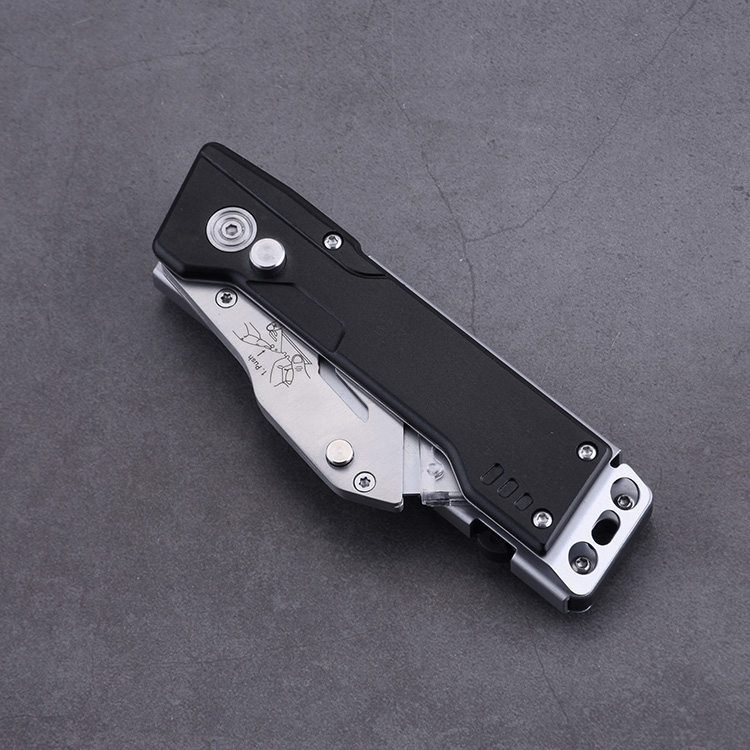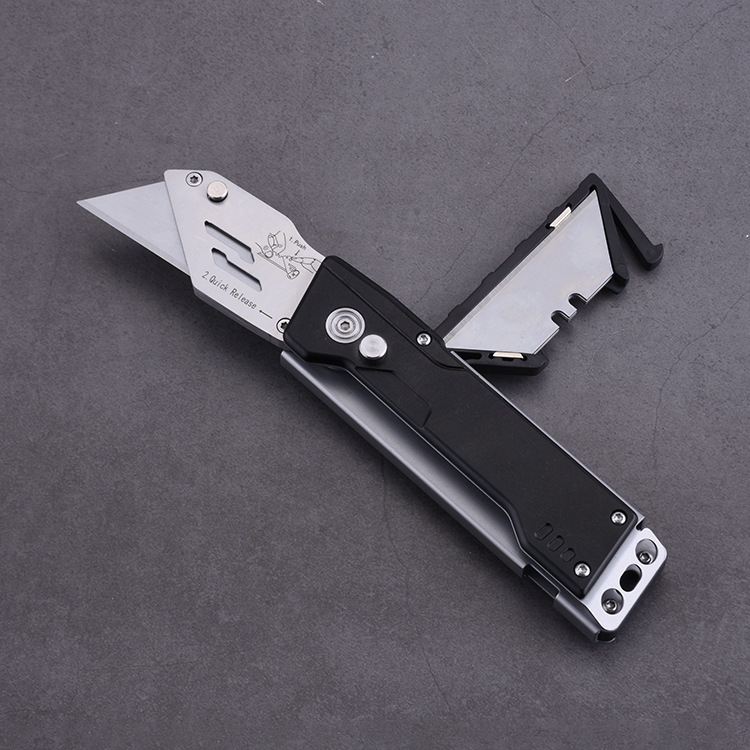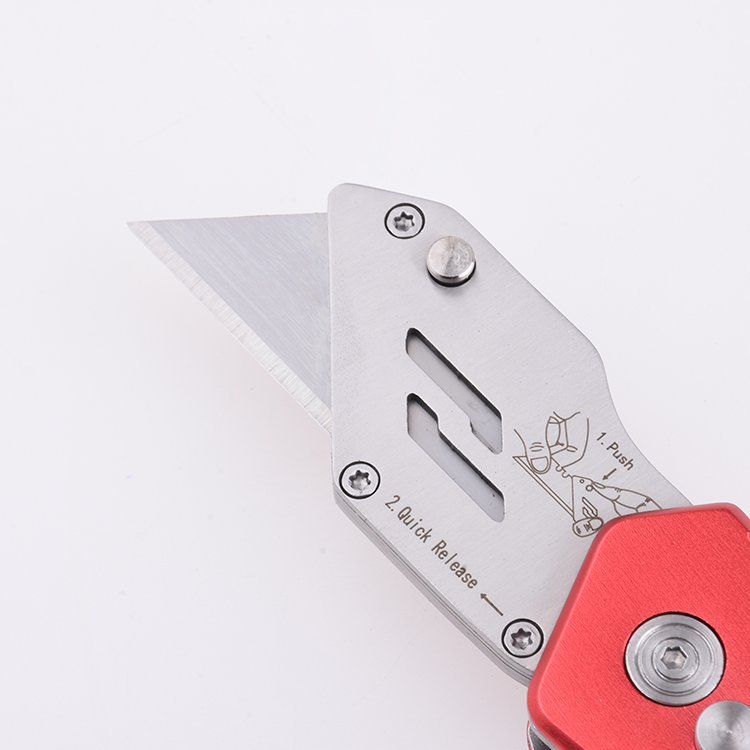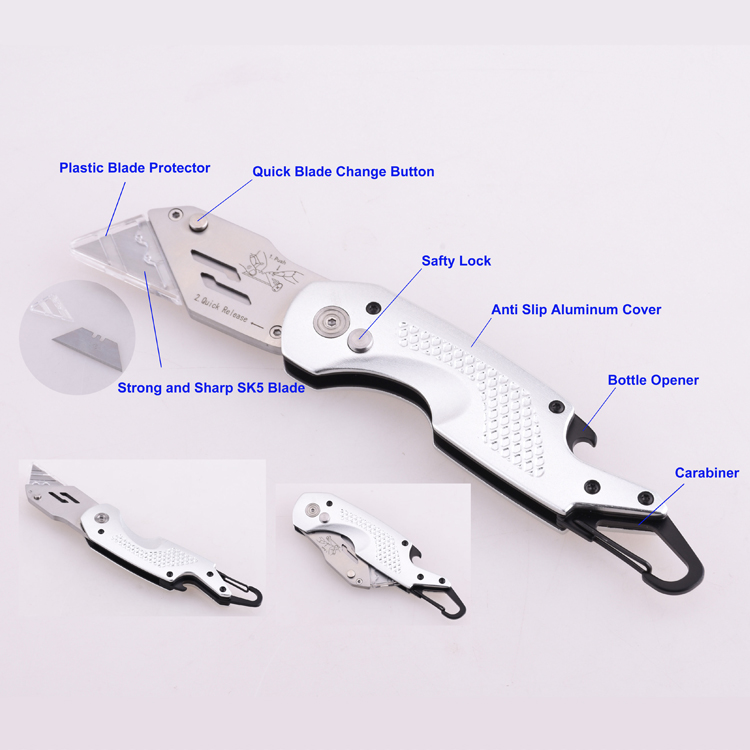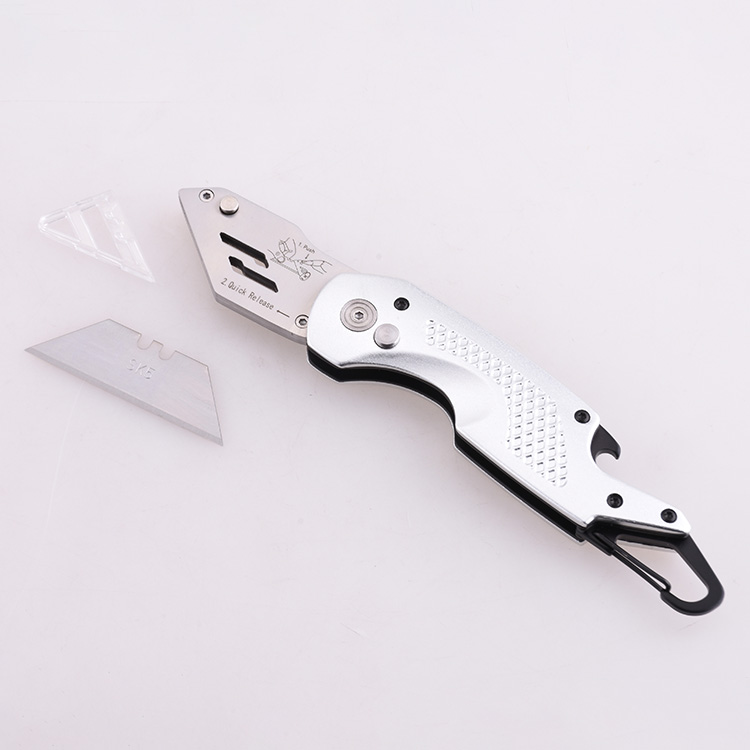Have you ever reached into your toolbox, grabbed one of those compact cutting tools and wondered – what’s the difference between a utility knife and a box cutter? Which one do I actually need? Well, wonder no more!
In this comprehensive guide, we’ll dive deep into everything you need to know about these two popular cutting tools. We’ll explore their key differences, usage scenarios, safety tips and maintenance best practices. Time to settle the utility knife vs. box cutter debate once and for all!
An Overview of Utility Knives
A utility knife, sometimes called a Stanley knife, is a versatile cutting tool used for a variety of materials and applications. It has a retractable blade that can be replaced or segmented, allowing you to snap off dull sections to reveal a sharp edge.
Utility knives typically have a larger, ergonomic handle and come in both metal and plastic variants. The comfortable grip gives you great control during prolonged use.
Here are some common utility knife applications:
- Opening packages
- Crafting – cutting paper, foam sheets, wood
- Stripping wires
- Carving and whittling
- Drywall cutting
- Flooring underlay cuts
- Gardening and landscaping
Essentially, it’s an adaptable multitasker for everyday cutting needs!
An Overview of Box Cutters
A box cutter, as the name suggests, is specifically designed for efficient cardboard cutting. It has a sharp, hooked blade that easily slices through cardboard, tape and packaging straps.
The compact build with retractable blades prioritizes safety and portability. The bright colors also make box cutters easy to spot in your toolbox.
Here are typical box cutter applications:
- Opening boxes
- Breaking down cardboard boxes
- Slicing packaging tape
- Trimming cardboard sheets
- Removing cable ties
So while utility knives are jacks-of-all-trades, box cutters have a very specialized purpose – conquering cardboard with extreme prejudice!
Key Design and Structural Differences
Now that we know the basics, let’s compare their physical build and design.
| Feature | Utility Knife | Box Cutter |
| Blade Type | Retractable, replaceable and segmented | Retractable, hooked |
| Handle | Larger, ergonomic | Compact and portable |
| Materials | Plastic, metal or rubberized | Typically plastic |
| Weight | Heavier | Very light |
| Versatility | Highly versatile | Specialized for cardboard |
The Blade
Utility knife blades are segmented, meaning you can snap off sections as they become dull. They also allow full blade replacement.
Box cutters have a simple hooked blade that fits completely into the handle when retracted. You snap off sections of the hook when they become dull.
The Handle
Utility knife handles prioritize grip comfort with ergonomic shapes and rubberized coatings. Hence they are larger in size.
Box cutters value portability more, so have a smaller and lightweight plastic handle.
Materials and Build
Utility knives come in heavier duty metal variants as well as plastic builds. Some also have rubber handle coatings for enhanced comfort and grip.
Box cutters usually feature colorful plastic shells that are impact-resistant yet lightweight.
Blade Replacement Mechanisms
Both tools allow easy blade replacements, but work slightly differently:
Utility Knives: Have a button or sliding lever that releases the blade holder. You can then replace the entire blade or just the snapped tip.
Box Cutter: Features a small notch in the blade. Simply press this notch and snap off the section of blade to reveal a fresh edge.
Usage Scenarios and Applications
Now for the fun part – seeing these tools in action! Their suitability depends on your particular needs:
The Warehouse Warrior
Box Cutter
If you slay boxes all day in a warehouse or stockroom, a box cutter is your perfect partner in cardboard crime!
The sharp, durable blade makes quick work of various cardboard types, straps, and packaging tape with minimal effort. It’s lightweight enough to holster in your pocket and easily whip out when needed. Low long term cost as well since replacement blades are inexpensive.
The Handy Honey
Utility Knife
For odd jobs around the house, from unboxing packages to backyard projects, a utility knife is super handy!
The comfortable grip gives great control for detailed craft cuts yet easily slices through heavier items too. Snap-off dull blades on-the-fly without needing replacements. An all-round everyday hero!
The Crafting Queen
Utility Knife
For makers creating delicate papercrafts or detailed foam sculptures, the utility knife rules!
The variety of blade types (pointed, beveled, etc.) lets you achieve precise artistic cuts. The comfortable handle also reduces hand strain during prolonged use.
Safety Comparison
Sharp objects demand extra care. Follow these tips for safe cutting:
- Retract Bladeswhen not in use
- Replace Dull Edgesfor maximum control
- Cut on Stable Surfacesto avoid slips
- Secure Materialbeing cut to prevent shifting
- Cut Outwardwith the blade pointing away from you
- Wear Glovesfor added hand protection
- Mind Fingersand keep them clear of the cutting path!
Cost Effectiveness Analysis
Both utility knives and box cutters are affordable. But which offers better value?
Upfront Cost
- Utility Knife: $10 – $30
- Box Cutter: $2 – $15
Long Term Cost
- Utility Knife: Lower cost per use since blades last fairly long and are segmented for partial replacement.
- Box Cutter: Tend to require blade changes more frequently depending on cardboard volumes. But replacement blades are cheap.
The Bottom Line
For occasional home use, a box cutter’s lower initial cost may suffice. High volume users will get more value from a utility knife long term.
Maintenance and Care
Like any tool, proper care ensures longevity and performance. Here are some utility knife and box cutter care tips:
- Regular Cleaning:Wipe down blades after use to prevent material buildup
- Proper Storage:Store safely in a toolbox or drawer, away from children
- Occasional Oiling:Lightly oil any sliding mechanisms to prevent rust
Bonus Tips!
- Utility Knife: Tighten any loose blade bolts
- Box Cutter: Check handle for cracks periodically
Conclusion
We’ve reached the finale of this utility knife vs. box cutter showdown! Let’s recap the key lessons:
Utility Knives shine where versatility and precision are needed – the handyperson’s best friend!
Box Cutters specialize in easy cardboard slicing – perfect for warehouses and stockrooms!
The good news? You don’t have to choose!
Like bread and butter, both tools can coexist beautifully in your toolbox. Allow the utility knife and box cutter to play to their individual strengths, and together they’ve got all your cutting needs covered!
Just use our guidance to select whichever suits your specific application. Follow basic safety rules during use and care. With the right know-how, you can fully enjoy the convenience and efficiency of these compact cutting companions!
Check out Shieldon’s ergonomic and durable cutting tools at shieldon.com! Stay sharp!
FAQs
Q: What are the key differences in blade type?
A: The main differences are:
- Utility Knife– Retractable and segmented, allowing partial or full blade replacement
- Box Cutter– Retractable with a fixed, hooked shape. Snap off sections to refresh the edge.
Q: Which handle design is safer?
A: Both tools feature retractable blades for safety when not in use. Handles wise:
- Utility Knivesoffer better grip control for safe cutting
- Box Cuttersare more portable with kids-safe sliding buttons.
As long as blades are shielded when not used, and basic precautions taken, both tools enable safe usage.
Q: Can a utility knife handle cardboard as well as a box cutter?
A: Technically yes, utility knives can cut cardboard too. However, box cutters are purpose-designed for this task. The shorter blade and sharp edge cut through cardboard faster with less tearing of the material.
So for high volume cardboard handling, box cutters are much more efficient!
Q: How often do the blades need replacement?
A: This depends on usage frequency:
- Utility Knife:Snap off or fully replace blade sections whenever they become dull. With light use, blades can last months.
- Box Cutter:Hooked blades generally require replacement more often – sometimes weekly for frequent users. But blades are inexpensive.

